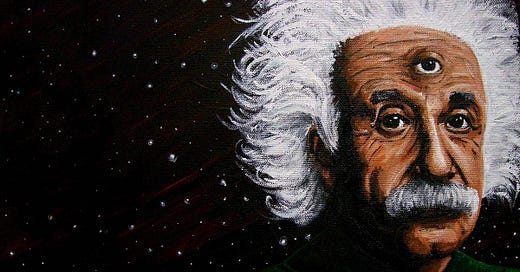The concept of the “third eye” is prevalent across various spiritual traditions. In Hinduism and certain esoteric traditions, it is associated with the Ajna chakra, the seat of intuition and higher consciousness. In Buddhism, while the term “third eye” is not commonly used, the experience it represents can be likened to deeper states of meditative insight (vipassanā), higher perception (abhiññā), and wisdom (paññā). This article explores commonly reported experiences when the third eye is said to open, drawing parallels to Buddhist thought and concluding with a bibliography for further reading.
1. Heightened Perception and Intuition
Many people who claim their third eye has opened report a heightened sense of intuition. They feel more attuned to their surroundings and can perceive events before they happen.
Buddhist Parallel: In Theravāda Buddhism, practitioners who develop deep meditative insight may experience “knowing” before an event occurs. This is known as pubbenivāsānussati-ñāṇa (knowledge of past lives) or dibbacakkhu (the divine eye), one of the six higher knowledges (abhiññā), achieved through advanced meditation.
2. Vivid and Prophetic Dreams
A common experience is an increase in vivid dreams, sometimes prophetic in nature. These dreams often carry symbolic meanings and provide guidance.
Buddhist Parallel: In Buddhist literature, particularly in the Jātaka tales and Pāli Canon, dreams are often considered messages from the subconscious or even past karmic influences. The Buddha himself interpreted significant dreams, as seen in texts like the Mahāpadāna Sutta (DN 14), where prophetic visions are described.
3. Pressure Between the Eyebrows
Some individuals report a tingling sensation or pressure between the eyebrows, where the third eye is traditionally located.
Buddhist Parallel: While not directly discussed in Buddhist texts, this sensation can be compared to meditative pīti (rapture), which arises during deep concentration. Advanced meditators may experience bodily sensations such as heat, vibrations, or pressure, as noted in the Visuddhimagga.
4. Increased Empathy and Sensitivity to Energy
Many report an enhanced sensitivity to others’ emotions and energies. They may feel overwhelmed in crowded spaces and develop a strong connection to nature and animals.
Buddhist Parallel: The cultivation of mettā (loving-kindness) and karuṇā (compassion) in Buddhism leads to a deep empathy for all beings. The Buddha encouraged practitioners to develop these qualities to break down the illusion of separateness and deepen interconnection with all life.
5. Seeing Auras or Lights
A frequent claim is the ability to see auras, colors, or flashes of light around people and objects.
Buddhist Parallel: The ability to see subtle energy fields can be linked to dibbacakkhu (the divine eye), which allows meditators to perceive beyond ordinary vision. The Kevaddha Sutta (DN 11) describes monks developing supernatural sight through deep meditation.
6. A Shift in Consciousness and Detachment from Material Desires
People often report feeling less attached to materialistic concerns and experience a shift in their perspective towards a more spiritual or existential viewpoint.
Buddhist Parallel: The path of renunciation and insight in Buddhism naturally leads to detachment from sensory pleasures and the illusion of self (anattā). The realization of impermanence (anicca) and suffering (dukkha) often follows deep meditation and wisdom.
Conclusion
While the opening of the third eye is often framed in mystical or esoteric terms, Buddhism provides practical frameworks for understanding these experiences. Many of the phenomena described align with meditative developments and insights attained on the Buddhist path. However, Buddhist teachings caution against attachment to mystical experiences, emphasizing wisdom, ethical conduct, and liberation over supernatural abilities.
Bibliography
Bodhi, Bhikkhu. In the Buddha’s Words: An Anthology of Discourses from the Pali Canon. Wisdom Publications, 2005.
Buddhaghosa. The Path of Purification (Visuddhimagga). Translated by Bhikkhu Ñāṇamoli, Buddhist Publication Society, 2010.
Ñāṇamoli, Bhikkhu. The Life of the Buddha: According to the Pali Canon. Buddhist Publication Society, 1992.
Thanissaro Bhikkhu. The Wings to Awakening. Metta Forest Monastery, 1996.
Thera, Nyanaponika. The Heart of Buddhist Meditation. Buddhist Publication Society, 2014.
Walshe, Maurice. The Long Discourses of the Buddha: A Translation of the Digha Nikaya. Wisdom Publications, 1995.





